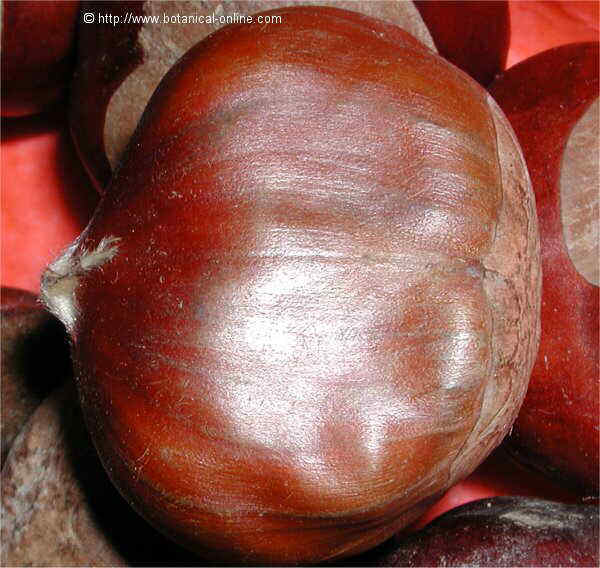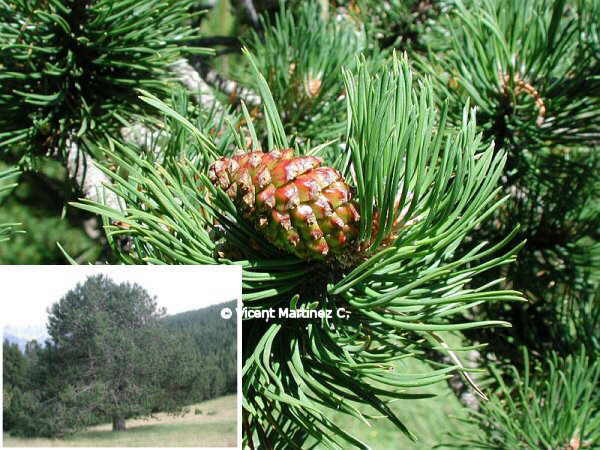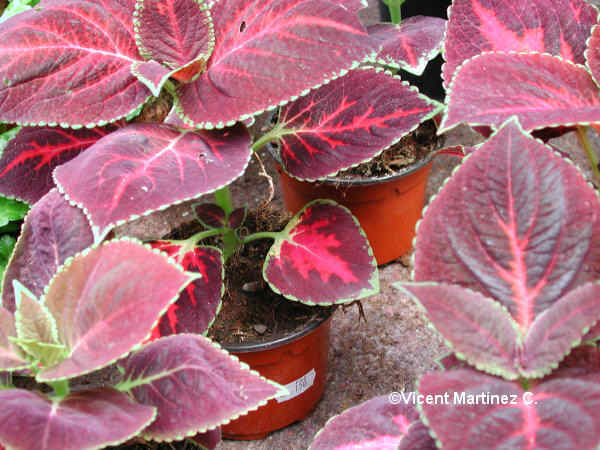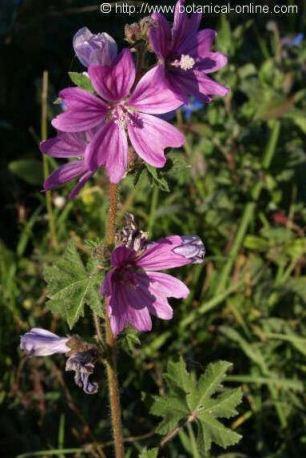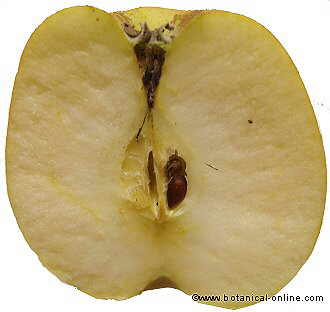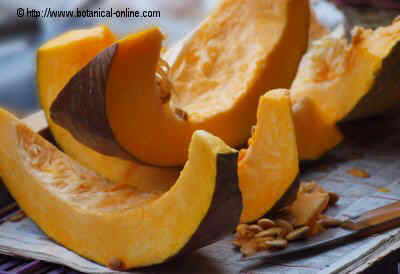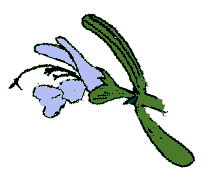Contents
Annual climbing plants
What are annual climbing plants or annual vines?
Annual vines are those climbing plants that, generally, when they are cultivated, they last a single season, although many of the considered annuals, are perennial plants or they can live more than a year in their place of origin or if they are cultivated in warm climates.
Main annual climbing plants
Among the main annual climbers we can mention the following:
- Nasturtium: There are approximately 87 species of the genus Tropaeolum, coming from the warm regions of South America and Mexico.
Some are annual; Others are perennial climbing plants. They stand out for the beauty of their flowers. They should be cultivated in the sun or semi-shade and need a moist and well drained soil.
Among them, we distinguish the following species: garden nasturtium, Indian cress or monks cress (Tropaeolum majus), the canary nasturtium or canary creeper (Tropaeolum peregrinum), flame nasturtium, flame flower (Tropaeolum speciosum), mashua (Tropaeolum tuberosum) or Chilean nasturtium or three-coloured Indian cress (Tropaeolum tricolor)
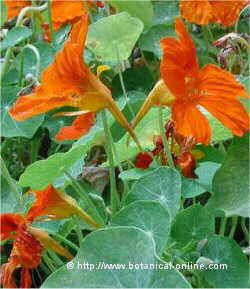
Flower of garden nasturtium (Tropaeolum majus). A flower that has also been used with medicinal and as food |
- Lathyrus: There are approximately 150 species of Lathyrus. Most of them come from the temperate regions of the northern hemisphere, although there are some species native to the Andes.
It is a genus closely related to the common pea (Pisum sativum). In fact, some species are edible plants. They are used in gardening because many of them are climbing plants using tendrils and their colorful mauve, blue, white or pale yellow flowers.
They should be grown in the sun in a fertile and well-drained soil and provided with supports so they can climb.
Among all the Lathyrus, stands out sweet pea (Lathyrus odoratus) which was one of the main species that Gregor Mendel used in his studies on his work on genetics to elaborate the famous Laws of Mendel.
It is not surprising we now have so many gardening varieties of this species (Lathyrus odoratus “Carnival”, Lathyrus odoratus “Katherine”, Lathyrus odoratus “Lucy”, Lathyrus odoratus “Hampton Court”, etc.).
Other very known species are: Lord Anson’s blue pea (Lathyrus nervosus) or perennial pea, also called broad-leaved everlasting-pea or perennial peavine (Lathyrus latifolius)
- Tumbergia or clockvine. : From Africa and Asia, there are about 100 species of the genus Thunbergia.
Among these we have many that are voluble climbers, most with individual trumpet flowers.
They need a drained and fertile soil and a sunny exposure, except in midsummer they prefer some shade.
Among them we have the following: black-eyed susan vine (Thunbergia alata); blue tumbergia, also named clockvine, Bengal trumpet or skyvine (Thunbergia grandiflora), (Thunbergia coccinea) (Thunbergia gregorii) (Thunbergia natalensis) (Thunbergia togoensis) etc.
- Ipomoea: We have approximately 300 species of the genus Ipomoea. They come from warm tropical and temperate zones. Many of them are voluble climbers, with infundibuliform flowers flowers of very short duration, although they are continuously producing new flowers.
They prefer warm and coastal climates and a sunny exposure.
Many of them are considered invasive plants. Among them, we have: sweet potato (Ipomoea batatas); common morning-glory or purple morning glory (Ipomoea purpurea); Jalap (Ipomoea purga), cardinal creeper, cypress vine, cypressvine morning glory, hummingbird vine, cardinal vine, star glory (Ipomoea quamoclit); blue morning glory, blue dawn flower, oceanblue morning glory or koali awa (Ipomoea indica); Fire vine (Ipomoea lobata); tropical white morning-glory or moonflower (Ipomoea alba); etc.
In cold climates they are grown as annuals
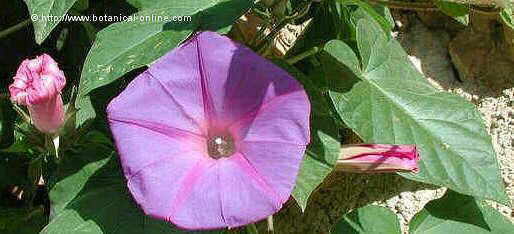
Blue morning glory (Ipomoea acuminata)
Blue morning glory, also called oceanblue morning glory, koali awa, and blue dawn flower (Ipomoea acuminata) is a perennial plant that can be grown as annual in cold places.
It has become naturalized becoming an invasive plant in cultivated fields and gardens in many warm places.
- Maurandya: Asarinas are plants belonging to the genus Maurandya, formerly known as Asarina. They are plants that have the ability to climb, using their voluble stems.
In their place of origin, they are perennial plants that produce tubular flowers throughout the season, but, when they are grown in colder climates, they must be treated as annuals.
They need to be cultivated in full sun or with lots of light, on wet, although not drenched, grounds. There are two species of this genus, both originating from Mexico and Central America:
* Asarina: (Asarina erubescens = Maurandya erubescens) It can measure about 3 m in height. It stands out for its pink flowers that can reach about 7 cm in length and appear in summer and autumn.
This plant has to be cultivated in bright light or in full sun, requiring a warm climate, frost free.
Abundant irrigation is necessary in spring and summer, although it should be watered little when the winter arrives. It can be propagated by seeds or cuttings in spring.
Pruning in spring encourages the birth of new stems and gives it a better look.
* Mexican trumpet, angels trumpet: (Asarina barclayana = Maurandya barclayana) It reaches a height of up to 4.5 m. It produces tubular flowers that can be white, purple or pink, with a lighter background.
In cold climates it can be cultivated in a pot indoors and then taken out when good weather arrives. In this case. it is best to place it next to a sheltered wall.
![]() More information on climbing plants
More information on climbing plants

